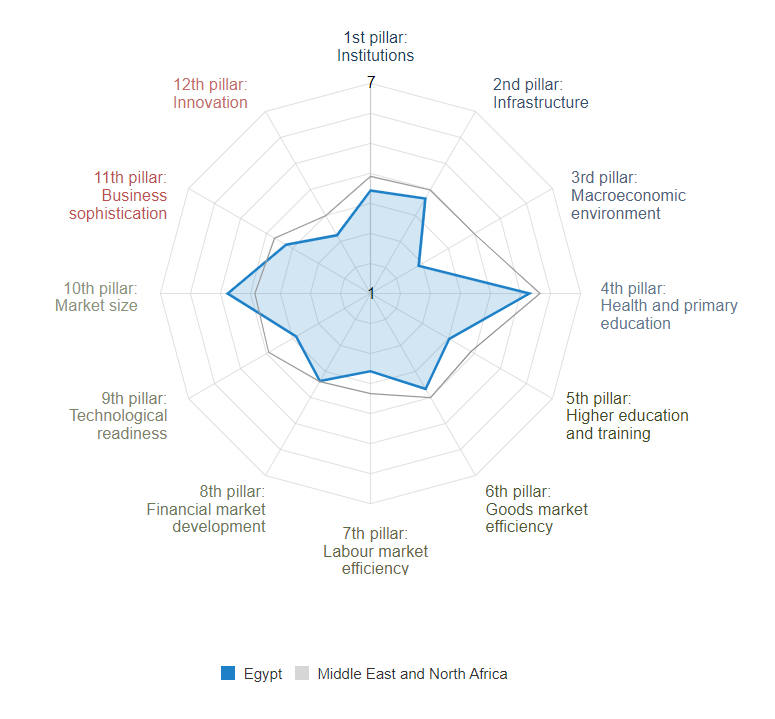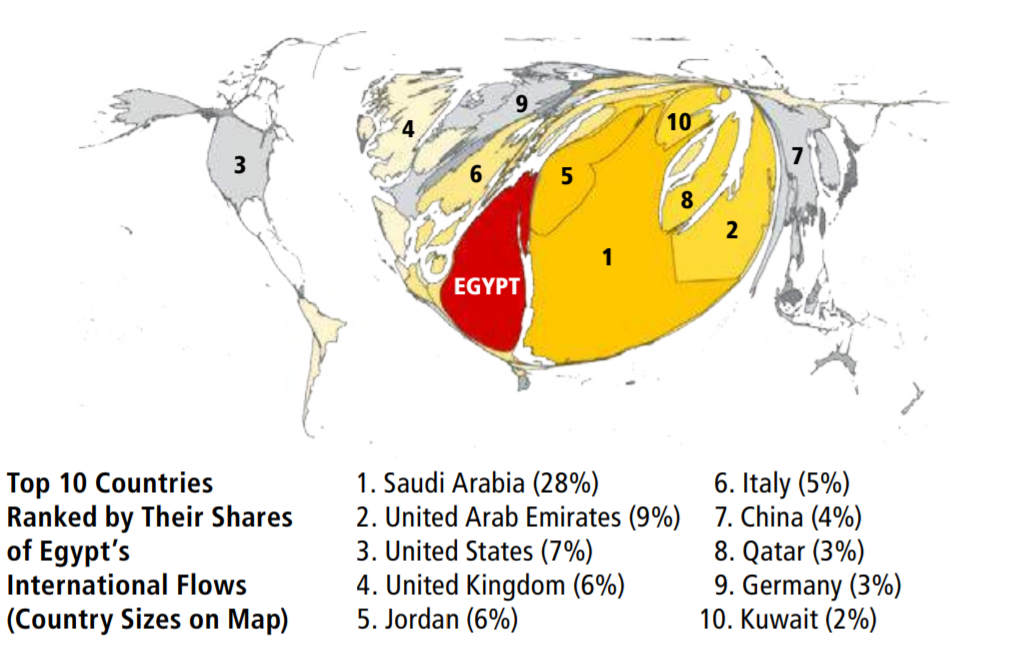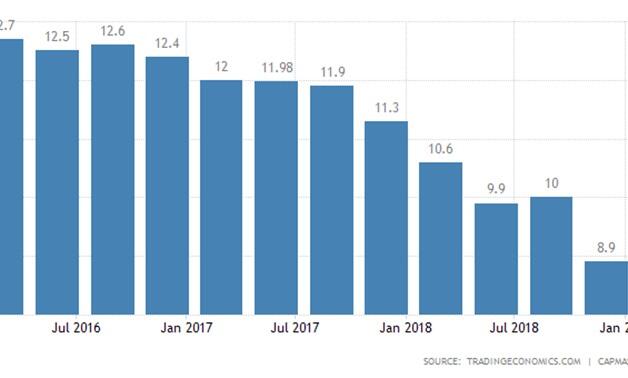Introduction
After recent damaging events, Egypt has been trying to become economically attractive and attract investment once again. It adopted an internationalistic approach, seeking financial aid from other countries. The reforms have been successful, improving the market’s attractiveness to various businesses. As such, investment has come in, and Egypt is currently on a path to recovery with the assistance of other nations. Nevertheless, the effects of the political and economic instability from several years ago remain prominent, and further support is necessary before the country can be considered safe for foreign companies to operate. Businesses should investigate the area in detail before they determine whether Egypt is suitable for their purposes. This report presents an analysis of the country’s political, economic, connective, and risk environments to help the TATA Motors company determine whether it should invest locally.
Egypt and Internationalism
Egypt has depended on the help of foreign nations to recover faster and to do so, it has had to accommodate the needs of these countries. According to Key Messages of Egypt VNR 2018 (2018), the country has been conducting economic and social reforms as well as infrastructure updates. The World Bank in Egypt (2019) describes its Country Partnership Framework that requires the elimination of extreme poverty and the sharing of prosperity. Key Questions on Egypt (2019) highlights how the International Monetary Fund is providing financial aid to Egypt to improve various aspects of the economy. By 2019, most of the significant changes have been completed, though the overall process is still ongoing (Arab News 2019). However, the changes have not been entirely successful in addressing Egypt’s issues in spite of the aid that they brought.
Egypt’s reforms consist of short-term reductions in spending for the sake of long-term growth and stability, qualities valued by investors. According to Al-Youm (2019), the changes began with the floatation of the pound as required by the IMF in 2016 alongside general public enterprise changes and energy subsidy removal. Egypt – Trade Agreements (2019) describes Egypt’s various deals with other African countries as well as the EU that help facilitate its economy. As a result, Egypt: the economy is gathering strength (2017) notes that the country’s economy is growing as the government ensures that the poor are protected. Annor (2019) highlights that people’s lives have not improved noticeably yet, but new employment opportunities should arrive soon. However, Egypt’s population may not be content to wait until the reforms are complete, especially if its perception of the situation does not match the news coverage.
Throughout the current government’s term, local activists and reporters have noted its practices, particularly those opposed to human rights. Egypt events of 2016 (2017) highlight the state’s suppression of dissent as well as its tendency of unjustly detaining people and treating them inhumanely. Egypt market challenges (2019) highlights Egypt’s reluctance to follow international law, particularly with regards to commercial disputes, a factor that lowers its investment attractiveness. Ulf Laessing (2019) claims that the country’s population began protesting in September due to the lack of tangible economic improvement over the years. Keeler (2019) adds that the demonstrations call for the president’s ousting and grow more heated due to the government’s efforts to suppress them by arresting people. The protests contribute to the government’s instability and reveal its inability to integrate into the international community satisfactorily.
Egypt’s Competitiveness

Overall, Egypt is not particularly attractive compared to the rest of the countries in the Middle East and North Africa. Egypt (2019) notes how its institution quality is below average, most likely due to the political unrest and the social service overhaul. The country’s infrastructure also has issues, and Omran (2018) highlights how massive investment is necessary to meet its needs. The macroeconomic environment is fragile (see figure 1), though the age of the dataset may motivate this factor. The slight weakness of the health and primary education systems may also be driven by the reform of the social services, though it should be noted that the local standards in the matter are relatively high. Overall, there are considerable grounds for improvement in all four categories, and currently, Egypt cannot compete locally or globally.
The country’s higher education and training facilities do not meet the standards set by its neighbors. Higher education (2019) notes that Egypt’s public universities are often overcrowded and that disadvantaged students often cannot study at the best facilities. The local goods market is slightly inefficient, possibly due to the added costs that result from the nation’s inferior infrastructure. The country’s labor market is significantly inefficient, and Ebaidalla and Ali (2018) note that workers tend to lack health insurance in spite of sickness-inducing circumstances, which drives people out of many fields. Lastly, Egypt’s financial market development is one of its two characteristics that match the average, likely due to the government’s improvements. Egypt’s GDP growth rate (2019) notes that the country has been able to maintain a steady 5% increase rate. Overall, this section shows significant potential for optimization and improvement, though the current government’s ability to achieve it is questionable.
The ninth pillar, technological readiness, shows results below the regional average, as well. Al-Aees (2019) notes that Egypt’s industry is mostly non-digital, and the government’s efforts to introduce IT solutions are hampered by the expenses necessary to achieve the goal. The country’s market size is considerably larger than average, and Egypt – market overview (2019) describes it as the third biggest importer in the Middle East. Business sophistication is low, likely because of the lack of digital measures in company operations. Lastly, innovation in Egypt is below average for the area, and Egypt – global innovation ranking (2019) ranks it near the 100th total rank in innovation out of the world’s 137 economies. Overall, Egypt’s market size is its only significant competitive advantage in the region, and in most other aspects, it is behind most of the countries in Africa and the Middle East.
Egypt’s Connectedness
As mentioned above, Egypt’s government has been putting much effort into establishing connections with other countries. Altman, Ghemawat, and Bastian (2019) claim that the nation’s overall connectedness grew significantly in 2018, leading to a 27-rank increase to the 97th spot. Nevertheless, its position worldwide is weak, as it is in the lower half of the rating. The country has been conducting efforts to connect with prospective trade partners, particularly those in the Middle East (see figure 2) and promote its image worldwide. Egypt looks to the future (2019) claims that Egypt is promoting its tourist destinations by partnering with the American company, CNN, and conducting a worldwide promotional campaign using the latter’s reach. Additionally, the country has been working to increase its exports to various parts of the world and reduce its dependence on imports, though the latter initiative is not seeing significant successes.

Egypt is a prominent manufacturer of a variety of goods, but the political upheaval that created its current state has hampered its ability to export these products. Egypt targets to quadruple exports (2019) discuss the nation’s ongoing growth in the outward flow of resources and notes that it does not match its manufacturing capabilities. 16.8% increase in value of Egypt’s exports (2018) highlights Egypt’s significant rises in exports of many different varieties and notes that Italy has displayed the most growth at approximately 50%. It should be noted that these statistics represent a return to Egypt’s economic output levels before the events of 2011 rather than fast growth. However, they show that the country is putting significant effort into improving its position and succeeding at the task, which is a positive indicator for a potential investor.
Egypt has also been working to reduce its imports, which decreases connectedness but benefits the country financially by making sure that money stays in the local market. Mounir (2019) claims that its efforts have been successful, with exports growing and imports shrinking, which has resulted in its current stable GDP growth. However, according to Adly (2019), Egypt remains a net fuel and food importer and lacks the natural resources necessary for the operation of many industries. Therefore, it has to rely on imports for many of its companies and is likely unable to achieve the goal of complete self-sustenance. Furthermore, Wally and Beillard (2019) claim that as the nation’s farmland shrinks, it becomes more reliant on exports of food products such as rice. Overall, Egypt is likely to remain a significant importer in the region, and with its export growth, the nation is positioned to increase its connectedness further.
Main Business Risks
The current political climate in Egypt and its effect on the country’s economy are the most significant risks for TATA Motors’s investment plans. Ullah (2019) highlights the issues that have been prevalent in the country for years, though, as an Indian company, TATA Motors may be less concerned over bad publicity from local activists. However, these concerns have escalated into widespread public unrest, which threatens any business that tries to operate in the country. According to Reid (2019), the demonstrations have already led to the elimination of any growth Egypt has been able to achieve in 2019. Furthermore, Egypt ETF plunges (2019) claims that the influence could be sustained and increase over time if protests persist. As such, it is currently risky for a business to invest in the country, and the initiative is likely to incur significant damage if put into practice.
Additionally, Egypt’s economy is subject to another issue that is likely to manifest in the future, namely, the results of its water conflict with Ethiopia. According to Lazarus (2018), the latter country is constructing a dam that may decrease the supply of water carried to Egypt by the river Nile. Due to Egypt’s current water scarcity issues, the effect of such a situation may be devastating for the nation’s economy. Hendawi (2019) quantifies the potential loss in “millions of acres of farmland and hundreds of thousands of jobs”, a massive risk that should concern any investor. Sisi says the Nile water issue a matter of life and death (2019) notes that Egypt has been proposing plans that would minimize the harm while allowing Ethiopia to construct its dam and benefit from it, but the other country remained unresponsive. The two nations will likely reach a compromise that satisfies both parties eventually, but currently, the conflict remains a significant risk.
The third and final point of concern is Egypt’s market itself, as it has numerous issues that lower the country’s attractiveness. As shown in figure 3, the nation’s residents have been increasingly able to find jobs over the years, but the rate remains high. With the recent tensions, it is possible that this tendency to decrease will no longer exist, at least temporarily. Furthermore, the market has had other issues such as inefficiency and the lack of innovation. Omran (2019) discusses other nations’ efforts to help Egypt increase its innovative efforts, but it is unlikely that the initiative will produce any results soon. Overall, TATA Motors should expect to operate in a market with high unemployment and a lack of modern technology among its partners, and both factors can damage its economic performance.

Conclusion
Egypt’s efforts to recover from the financial harm caused by the events of 2011 have been succeeding up until the autumn of 2019. The country has worked to embrace globalism and increase its connectedness, though there is still a considerable amount of work remaining. The country remains mostly below average in competitiveness, though its excellent market size has led companies to recognize it as attractive. With that said, the recent events, compounded by existing issues such as the water conflict, have created an unattractive environment for investors. TATA Motors should pay attention to these issues as much as any other company. As such, the business shouldn’t invest in the region at the moment, though the area warrants constant attention in case of future improvements.
Reference List
Ulf Laessing, K 2019, ‘Egypt’s investment allure tarnished as protests challenge reforms’, U.S. News, Web.
Annor, I 2019, ‘Egypt’s economic reforms, Africa News, Web.
Al-Youm, 2019, ‘Economic reform program concludes in 2019: Egypt’s PM’, Egypt Independent, Web.
Arab News 2019, ‘El-Sisi tells Egypt most painful economic reforms are over’, Web.
Al-Aees, S 2019, ‘Egypt eyes digitalisation of industry, but faces challenges’, Daily News Egypt, Web.
Omran, H 2018, ‘Egypt requires $675 bn of investments to meet its infrastructure needs: G20’, Daily News Egypt, Web.
Ebaidalla, EM and Ali, MEM 2018,Chronic illness and the labour market in Arab countries, Web.
Altman, SA, Ghemawat, P and Bastian, P 2019, DHL global connectedness index 2018, Web.
Egypt targets to quadruple exports in 5 years 2019, Egypt Today, Web.
Mounir, H 2019, ‘GDP growth rate to continue moving onwards and upwards: CBE’, Daily News Egypt, Web.
Wally, A and Beillard, MJ 2019, Egypt adds rice to its grain imports of wheat and corn, Web.
Adly, A 2019, ‘Satisfying the IMF won’t solve Egypt’s problems’, Bloomberg, Web.
Lazarus, S 2018, ‘Is Ethiopia taking control of the River Nile?’, CNN, Web.
Hendawi, H 2019, ‘Egypt hardens rhetoric on Ethiopia’s Blue Nile dam’, The National, Web.
Sisi says Nile water issue a matter of life and death for Egypt, wants Sudan removed from terror list 2019, Ahram Online, Web.
Egypt ETF plunges amid political unrest, rising protests2019, Web.
Ullah, A 2019, ‘UK minister in Egypt for investment talks as mass trial of activists continues’, Middle East Eye, Web.
Reid, D 2019, ‘5 big risks that the world’s fragile economy doesn’t need right now’, CNBC, Web.
Omran, H 2019, ‘RITSEC launches regional initiative for knowledge, innovation: Finland’s embassy’, Daily News Egypt, Web.
Egypt: the economy is gathering strength 2017, Web.
Unemployment rate records 8.1% in Q1 2019 2019, Egypt Today, Web.
Keeler, D 2019, ‘Emerging and growth markets, September 29th 2019’, The Wall Street Journal, Web.
The World Bank in Egypt2019, Web.
Key messages of Egypt VNR 20182018, Web.
Egypt market challenges2019, Web.
Egypt events of 2016 2017, Web.
Egypt – trade agreements 2019, Web.
Key questions on Egypt 2019, Web.
Egypt2019, Web.
Egypt – market overview 2019, Web.
Egypt GDP growth rate2019, Web.
Egypt – global innovation ranking2019, Web.
Higher education 2019, Web.
16.8 % increase in value of Egypt’s exports in 2017: CAPMAS 2018, Daily News Egypt, Web.